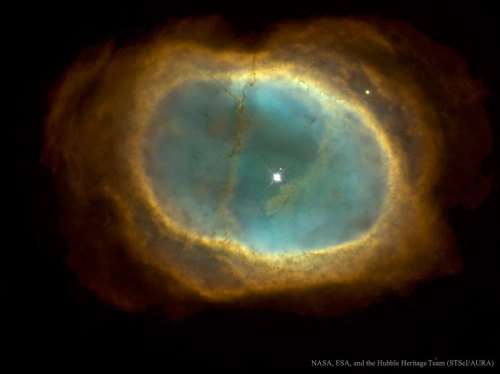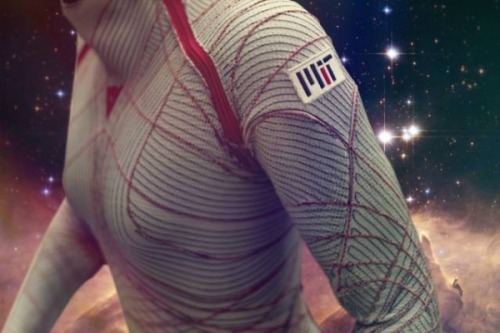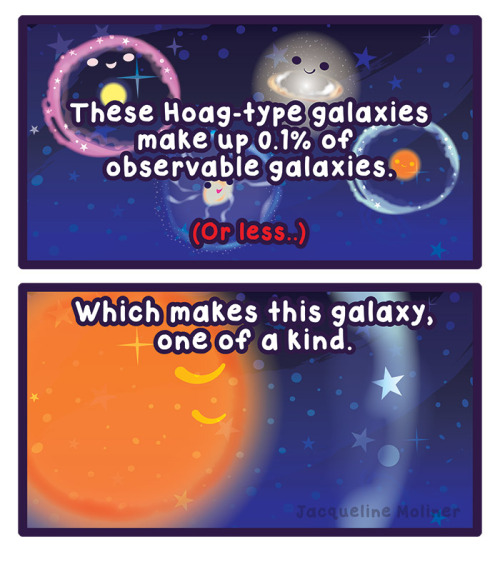Glossary:

Observing stars is all well and good, but how can I use stars to make my life easier? With a few handy tools and a lot of complicated math and careful table scouting, of course! Okay, it’s not actually any easier to tell where you are, predict when the Sun will rise or where the star Rigel will be at 11:36pm EST, or guess when the next eclipse will be using these tools, but if you don’t have a computer handy maybe it will help.
I did my best to describe all these odd devices in the clearest terms I could but you can hit me up with questions if you have them! Definitely check out some of the video links if you can’t quite picture what I said. I’m also on Twitter at @HDandtheVoid if you’d rather ask me there. And please check out the podcast on iTunes, rate it or review it if you’d like, and subscribe! I’ll always post all the extras here on Tumblr but iTunes is probably more convenient for downloading.
Below the cut are my sources, music credits, vocab list, and the transcript. I mention a play and a story/book and quote an astronomy book in this episode so if you want to see that written down, those sources are there as well. Let me know what you think of this episode, let me know what you think I should research next*, tell me a fun space fact… anything’s helpful!
*(My thoughts were planets, spectroscopy, or Edmond Halley. Let me know by the 6th and I’ll have the next podcast up by July 17th!)
Glossary:
armillary sphere - a device showing the apparent daily motion of the Sun depending on the season, the date, and the latitude of observation. See example video in the link.
Antikythera Mechanism - a device used to establish a calendar based on the Metonic Cycle; eclipse prediction; the location of planets, the Sun, and the Moon on a particular day; and determine the phase of the Moon on a particular day. See example video in the link.
astrolabe - a device for measuring the altitudes of certain celestial objects and for calculating latitude before the development of the sextant. One side is indented, the space called the mater, and can hold a plate depicting the local latitude. Over this plate is a rete, which points out different fixed stars as well as the Sun’s ecliptic, divided into 30 degree sections representing the zodiac signs. On top of the rete was a clock-like hand that stretched the diameter of the astrolabe, called the rule. The rule and rete could be rotated over the face of the plate. See example in the link.
azimuth - a section of the horizon measured between a fixed point and the vertical circle passing through the center of an object. See example in the link.
declination - the angle of the Sun relative to the equator. The Sun’s angle changes with the seasons.
ecliptic - the path of the Sun over the course of a year.
exeligmos cycle - a cycle that is 3 times the saros cycle, or 669 months. It is more accurate means of predicting eclipses and additionally predicts eclipses that will be visible from a location close to the initial eclipse.
kamal - an Arabic navigation tool consisting of a knotted string and a piece of wood. A navigator would tie a knot in the string and, by holding it in their teeth, sight the North Star along the top of the wooden piece and the horizon along the bottom. To return home, the navigator would sail north or south to bring Polaris to the altitude they had observed in their home port, then turn left or right and sail down the latitude, keeping Polaris at a constant angle. Over time, Arab navigators started tying knots at regular intervals of a fingerwidth, called an issbah, that’s about 1 degree and 36 minutes.
metonic cycle - a 19-year cycle developed by the Babylonians to sync their lunar months with the solar year. In the Metonic cycle, there would be 12 years that lasted 12 lunar months and 7 years that lasted 13 months.
saros cycle - a cycle of 223 months that is used to predict eclipses.
sextant - a device used to determine an observer’s location based on the observation of a known celestial object and a lot of calculation. It is still in use by sailors.
stereographic projection - a process for depicting a spherical, 3-dimensional object on a flat surface. An imaginary line is drawn from one point on the object to a point on the flat surface, following an angle to achieve the same relationship between each point on the object. See example in the link
Script/Transcript
Sources:
Video of how to use an armillary sphere
History of the armillary sphere via University of Cambridge
Video lecture on using an armillary sphere. It sounds like he’s trying to sell it.
Video of how to use an astrolabe
Make your own astrolabe suggestions via In the Sky.org
An old guy kept up a website on astrolabes but he died in April 2016, it’s very sad. Excellent info though.
Explanation of unequal hours
Pullman Car Hiawatha summary, just to prove it’s a real play
Chaucer’s Canterbury Tales with its brief astrolabe mention
Video on how to use a sextant
The many uses of a sextant via Classic Sailing
Why a sextant works via Trailnotes
The history of the sextant
The definition of azimuth
The definition of declination
Video of Antikythera Mechanism’s virtual model based on a theoretical and mechanical model. Just a theoretical model!
Antikythera Mechanism via Smithsonian Magazine
The Antikythera Mechanism Research Project website
Antikythera Mechanism via The New Yorker
Saros cycle via NASA
Saros and Exeligmos cycles
Crouper, Heather and Nigel Henbest. The History of Astronomy. Firefly Books: Buffalo, NY, 2007.
“The circular gear wheels of the Antikythera Mechanism reflect the ancient Greeks’ preoccupation with circles—and with the idea that everything in the sky moves around in circular paths, because the heavens are the home of perfection, and a circle is the ideal shape.” (59)
Intro Music: ‘Better Times Will Come’ by No Luck Club off their album Prosperity
Filler Music: ‘Brooklyn Nights Guitar’ loop from Garageband
Outro Music: ‘Fields of Russia’ by Mutefish off their album On Draught
More Posts from Fillthevoid-with-space and Others

New Zealand was lovely, but I already touched on what I’d be tempted to talk about with my Southern Stars episode. A person I interviewed as a potential new housemate gave me the idea for this episode because the joy of outer space is truly everywhere and anywhere. The field of astrogeology was not something I had heard of before, though I had indirectly heard of Eugene Shoemaker. I knew the comet Shoemaker-Levy 9 was named after him (and Carolyn Shoemaker, his wife). It turns out he basically founded the modern field of astrogeology! So I talk about him for quite a while, too.
Below the cut are the glossary, transcript, sources, and music credits. Send me any topic suggestions via Tumblr message (you don’t need an account to do this, just submit as anonymous). You can also tweet at me on Twitter at @HDandtheVoid, or you can ask me to my face if you know me in real life. Subscribe on iTunes to get the new episodes of my semi-monthly podcast, and please please please rate and review it. Go ahead and tell friends if you think they’d like to hear it, too!
(The next episode is going to be famous comets, and I’m shooting for an April release.)
Glossary
aeolian processes - the wind’s ability to shape the surface of a planet by eroding, transporting, and depositing materials. Most effective in desert regions, where the sparse vegetation, dry soil, and loose sediments mean these processes have the greatest impact.
albedo features - the International Astronomical Union term for an area of a planet that has a high contrast in color with the surrounding area on a planet’s surface.
chaos terrain - the International Astronomical Union term for where ridges, cracks, and plains on a planet’s surface appear broken and smashed up against each other.
chasma - the International Astronomical Union term for a long, steep-sided, deep surface indentation in a planet’s surface.
colles - the International Astronomical Union term for collections of small, knob-like hills on the surface of a planet.
dorsum - the International Astronomical Union term for a wrinkle-like ridge on a planet’s surface.
facula - the International Astronomical Union term for a bright spot on planets or moons.
fluvial processes - the ways in which rivers and streams impact a planet’s surface by eroding or creating deposits and landforms out of sediment. Sometimes, streams or rivers are associated with glaciers, ice sheets, or ice caps, and then they are called glaciofluvial or fluvioglacial processes.
fossa - the International Astronomical Union term for a long, narrow depression in a planet’s surface.
lacunae - the International Astronomical Union term for irregularly shaped depressions that look like dry lake beds on the surface of Saturn’s moon, Titan.
lobate scarp - the International Astronomical Union term for a curved slope that is probably formed by compressive tectonic movement.
mare - the International Astronomical Union term for a large, circular plain on a planet’s surface.
terra - the International Astronomical Union term for an extensive landmass like a plain or highland.
tesserae - the International Astronomical Union term for regions on the planet Venus that are tiled, polygonal shapes.
vallis - the International Astronomical Union term for a valley on the surface of a planet.
Script/Transcript
Sources
Planetary geology via Wikipedia
Lunar Lobate Scarp via the Lunar Reconnaissance Orbiter Camera
Eugene M. Shoemaker Biographical Memoirs via NASA
Dr. Eugene Shoemaker, 69; Set Record for Finding Comets via The New York Times (July 1997)
Eugene Shoemaker (1928-1997) via NASA Jet Propulsion Lab
Eugene Shoemaker (1928 - 1997) via American Astronomical Society
Gene Shoemaker - Founder of Astrogeology via US Geological Society
Eugene Shoemaker via the Planetary Society
Eugene Shoemaker Ashes Carried on Lunar Prospector via NASA Jet Propulsion Lab
Eugene M. Shoemaker and the Integration of Earth and Sky via GSA Today (April 2001)
Destination Moon by Carolyn C. Porco (Feb 2000)
“I wanted to include something to commemorate Gene’s scientific legacy. It seemed appropriate to choose his favorite photo of Meteor Crater and a photo of the last comet that he and his wife saw together, Comet Hale-Bopp. And somehow, I extracted from the dusty realm of dim memory a passage I had read from Romeo and Juliet long ago that seemed perfect for the occasion.”
Who is an Astrogeologist? via Space Awareness
Careers via the USGS Astrogeology Science Center
“Public Service by contributing to the public knowledge about our Solar System.”
Lunar Calibration via USGS
“The unmatched stability of the lunar surface reflectance (better than one part in 108 per year) makes the Moon attractive as a calibration light source; its radiance can be known with high precision and accuracy. The lunar irradiance is similar in brightness to sunlit land masses on the Earth.”
Video: Astrogeology 1963-2013: Fifty Years of Exploration via the USGS Astrogeology Science Center
Intro Music: ‘Better Times Will Come’ by No Luck Club off their album Prosperity
Filler Music: ‘Muddy Waters’ by LP off her album Lost On You
Outro Music: ‘Fields of Russia’ by Mutefish off their album On Draught

The 10-billion-year life cycle of the Sun, illustrated by David Meltzer for National Geographic, May 1974.
Gretchen: On the International Space Station, you have astronauts from the US and from other English speaking countries and you have cosmonauts from Russia. And obviously it’s very important to get your communication right if you’re on a tiny metal box circling the Earth or going somewhere. You don’t want to have a miscommunication there because you could end up floating in space in the wrong way. And so one of the things that they do on the ISS – so first of all every astronaut and cosmonaut needs to be bilingual in English and Russian because those are the languages of space. Lauren: Yep. Wait, the language of space are English and Russian? I’m sorry, I just said ‘yep’ and I didn’t really think about it, so that’s a fact is it? Gretchen: I mean, pretty much, yeah, if you go on astronaut training recruitment forums, which I have gone on to research this episode… Lauren: You’re got to have a backup job, Gretchen. Gretchen: I don’t think I’m going to become an astronaut, but I would like to do astronaut linguistics. And one of the things these forums say, is, you need to know stuff about math and engineering and, like, how to fly planes and so on. But they also say, you either have to arrive knowing English and Russian or they put you through an intensive language training course. But then when they’re up in space, one of the things that they do is have the English native speakers speak Russian and the Russian speakers speak English. Because the idea is, if you speak your native language, maybe you’re speaking too fast or maybe you’re not sure if the other person’s really understanding you. Whereas if you both speak the language you’re not as fluent in, then you arrive at a level where where people can be sure that the other person’s understanding. And by now, there’s kind of this hybrid English-Russian language that’s developed. Not a full-fledged language but kind of a- Lauren: Space Creole! Gretchen: Yeah, a Space Pidgin that the astronauts use to speak with each other! I don’t know if anyone’s written a grammar of it, but I really want to see a grammar of Space Pidgin.
Excerpt from Episode 1 of Lingthusiasm: Speaking a single language won’t bring about world peace. Listen to the full episode, read the transcript, or check out the show notes. (via lingthusiasm)

LUCIDA
[noun]
the brightest star in a constellation.
Etymology: from the full phrase in Latin stella lūcida meaning “bright star”. Lucida can be traced to the Latin verb lūcēre, "to shine,“ from lux, "light.”
[Tim Barton - Amber of the Void]
Tampons were packed with their strings connecting them, like a strip of sausages, so they wouldn’t float away. Engineers asked Ride, “Is 100 the right number?” She would be in space for a week. “That would not be the right number,” she told them. At every turn, her difference was made clear to her. When it was announced Ride had been named to a space flight mission, her shuttle commander, Bob Crippen, who became a lifelong friend and colleague, introduced her as “undoubtedly the prettiest member of the crew.” At another press event, a reporter asked Ride how she would react to a problem on the shuttle: “Do you weep?”
Astronaut Sally Ride and the Burden of Being “The First” (via dinosaurparty)

NGC 3132: The Eight Burst Nebula : Its the dim star, not the bright one, near the center of NGC 3132 that created this odd but beautiful planetary nebula. Nicknamed the Eight-Burst Nebula and the Southern Ring Nebula, the glowing gas originated in the outer layers of a star like our Sun. In this representative color picture, the hot blue pool of light seen surrounding this binary system is energized by the hot surface of the faint star. Although photographed to explore unusual symmetries, its the asymmetries that help make this planetary nebula so intriguing. Neither the unusual shape of the surrounding cooler shell nor the structure and placements of the cool filamentary dust lanes running across NGC 3132 are well understood. via NASA
js

Next Generation Spacesuit like Second Skin
Scientists from MIT have designed a next-generation spacesuit that acts practically as a second skin, and could revolutionize the way future astronauts travel into space. (Photo : Jose-Luis Olivares/MIT)
Astronauts are used to climbing into conventional bulky, gas-pressurized spacesuits, but this new design could allow them to travel in style. Soon they may don a lightweight, skintight and stretchy garment lined with tiny, muscle-like coils. Essentially the new suit acts like a giant piece of shrink-wrap, in which the coils contract and tighten when plugged into a power supply, thereby creating a “second skin.”
“With conventional spacesuits, you’re essentially in a balloon of gas that’s providing you with the necessary one-third of an atmosphere [of pressure,] to keep you alive in the vacuum of space,” lead researcher Dava Newman, a professor of aeronautics and astronautics and engineering systems at MIT, said in astatement.
“We want to achieve that same pressurization, but through mechanical counterpressure - applying the pressure directly to the skin, thus avoiding the gas pressure altogether. We combine passive elastics with active materials. … Ultimately, the big advantage is mobility, and a very lightweight suit for planetary exploration.”
Newman, who has worked for the past decade on a design for the next-generation spacesuit, describes the new garment in detail in the journal IEEE/ASME: Transactions on Mechatronics.
The MIT BioSuit’s coils, which are a main feature of the outfit, are made from a shape-memory alloy (SMA). At a certain temperature, the material can “remember” and spring back to its engineered shape after being bent or misshapen.
Skintight suits are not a novel idea, but in the past scientists have always struggled with the question: how do you get in and out of a suit that is so tight? That’s where the SMAs come in, allowing the suit to contract only when heated, and subsequently stretched back to a looser shape when cooled.
Though the lightweight suit may not seem at first like it can withstand the harsh environment that is outer space, Newman and his colleagues are sure that the BioSuit would not only give astronauts much more freedom during planetary exploration, but it would also fully support these space explorers.
Newman and his team are not only working on how to keep the suit tight for long periods of time, but also believe their design could be applied to other attires, such as athletic wear or military uniforms.
“An integrated suit is exciting to think about to enhance human performance,” Newman added. “We’re trying to keep our astronauts alive, safe, and mobile, but these designs are not just for use in space.”
-
 fillthevoid-with-space reblogged this · 7 years ago
fillthevoid-with-space reblogged this · 7 years ago
A podcast project to fill the space in my heart and my time that used to be filled with academic research. In 2018, that space gets filled with... MORE SPACE! Cheerfully researched, painstakingly edited, informal as hell, definitely worth everyone's time.
243 posts
![The Science Of Interstellar - Black Hole [YouTube Video]](https://64.media.tumblr.com/a1cf99c4f65fd1eae0d88d0485c9f109/tumblr_nfogd8kIyF1qb6kd0o1_250.gif)
![The Science Of Interstellar - Black Hole [YouTube Video]](https://64.media.tumblr.com/e1f24da4d0364bc2ca8dbb2c0bdfea28/tumblr_nfogd8kIyF1qb6kd0o3_250.gif)
![The Science Of Interstellar - Black Hole [YouTube Video]](https://64.media.tumblr.com/821ab338f5c9fd5c61cc1af57318cbaf/tumblr_nfogd8kIyF1qb6kd0o4_250.gif)
![The Science Of Interstellar - Black Hole [YouTube Video]](https://64.media.tumblr.com/f40b0668bb5fc168df25afc88b7bdfe5/tumblr_nfogd8kIyF1qb6kd0o5_250.gif)
![The Science Of Interstellar - Black Hole [YouTube Video]](https://64.media.tumblr.com/04b808634cb4e90392903fc5c65e1d79/tumblr_nfogd8kIyF1qb6kd0o6_250.gif)
![The Science Of Interstellar - Black Hole [YouTube Video]](https://64.media.tumblr.com/b45ee46e319ac5ffc37f82f071b2dac3/tumblr_nfogd8kIyF1qb6kd0o2_250.gif)











